“Coastal defences built at Happisburgh are now in disrepair. Sea-level rise and climate change, including increased storminess, may also increase the rate of erosion.”
The Extinction Collection
We have invited selected sculptors and artists to create a special collection of artworks highlighting climate change through time, including artworks featuring fossils, artefacts, and materials from Happisburgh, the home of Explorers Against Extinction. The collection was previewed at the Palace of Westminster in London from 15 – 19 April. The public exhibition tour commences in June. Please see EVENTS for details.
Happisburgh is the site of the earliest known human occupation in the UK, dating back 900,000 years. It will be one of the first UK communities lost to coastal erosion. As its sand cliffs are eroded, relics of extinct species and early humans who lived nearly one million years ago are exposed. Fossils from mammoths, elephants and rhinos are found on the beach, together with ancient flint tools and wood from drowned forests. They were all made extinct by historic climate change.
The collection comprises 20 works, with those at the centrepiece featuring fossils and artefacts from Happisburgh. Other works highlight today’s endangered species and at-risk wild spaces and invite us to consider the relationship between humans, climate change and extinction. Together the collection offers a tangible way to consider extinction through time.
The collection was unveiled at The Palace of Westminster on Monday 15th April 2024. It was exhibited there for 1 week.
The public exhibition tour starts in June at Nature In Art, Gloucestershire, followed by The Fine Art Society, Edinburgh; gallery@OXO, London and The Crypt Gallery, Norwich. It will then embarking on a regional tour, to raise awarness about coastal erosion in the UK, visiting communities at risk of coastal erosion throughout Spring 2025.
Participating Artists
Richard Deacon CBE
Richard Deacon’s voluptuous abstract forms have placed him at the forefront of British sculpture since the 1980s and, hugely influential, his works are visible in major public commissions around the world.
His work is abstract, but often alludes to anatomical functions. His works are often constructed from everyday materials and he calls himself a “fabricator” rather than a “sculptor”.
Deacon won the Turner Prize in 1987 (nominated for his touring show For Those Who Have Eyes) having previously been nominated in 1984.
For The Extinction Collection Richard has fabricated a sculpture from the fossilized teeth of three species – The Southern Mammoth, The Steppe Mammoth and the Long-tusked Elephant. All three teeth were found on Happisburgh beach, Norfolk, washed from the sediments as a result of modern day climate change. All three species were made extinct locally by historic climate change.
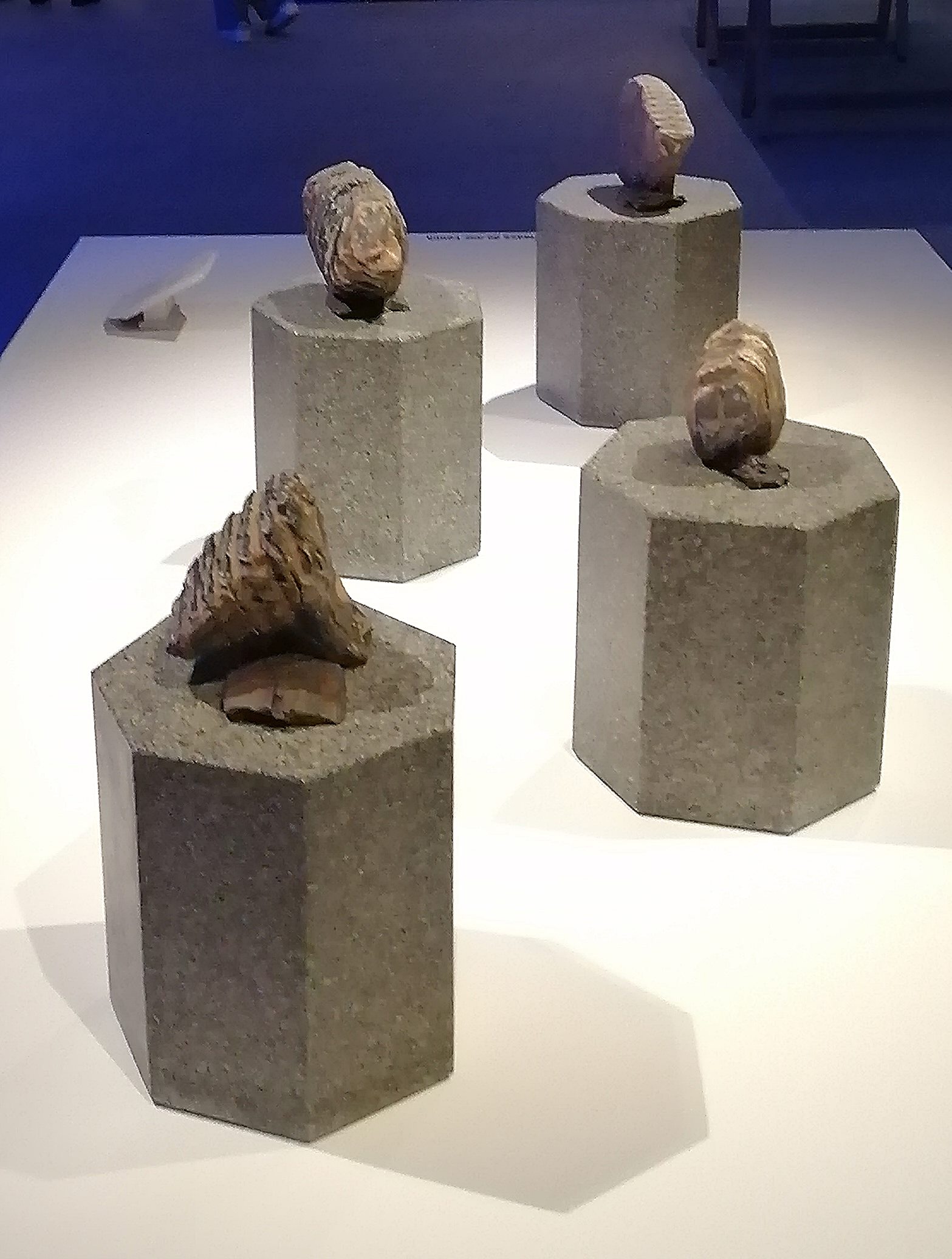
Emily Young FRBS
Emily Young is considered one of the most successful sculptors working in Britain and she has been often called Britain’s greatest living stone sculptor. Because of the powerful nature of her pieces, Young became known as a mediator between humanity and nature in its most primitive, basic forms.
The primary objective of her sculpture brings the relationship of humankind and the planet into closer conjunction. The natural beauty, history and energy of material stone, including its capacity to embody human consciousness, can endure into the future of a vast unknowable universe.
For The Extinction Collection Emily has carved one of her trademark faces emerging from fossil stone. Embedded in it like a jewel is a 600,000-year-old hand axe made by a species of human now extinct through historic climate change. The hand axe was found on Happisburgh beach as a result of modern-day climate change causing erosion through ocean level rise.

Peter Randall-Page RA
During the past 40 years Peter Randall-Page has gained an international reputation through his sculpture, drawings and prints. He has undertaken numerous large-scale commissions and exhibited widely. His work is held in public and private collections throughout the world including Japan, South Korea, Australia, USA, Turkey, Eire, Germany and the Netherlands. His work is in the permanent collections of the Tate Gallery and the British Museum amongst others.
His practice has always been informed and inspired by the study of natural phenomena and its subjective impact on our emotions. In recent years his work has become increasingly concerned with the underlying principles determining growth and the forms it produces.
For The Extinction Collection Peter has 3D printed the mirror image of a Steppe Mammoth bone. This has then been cast in bronze and gilded gold, to echo the original fossil, creating a sculpture with both items side by side.
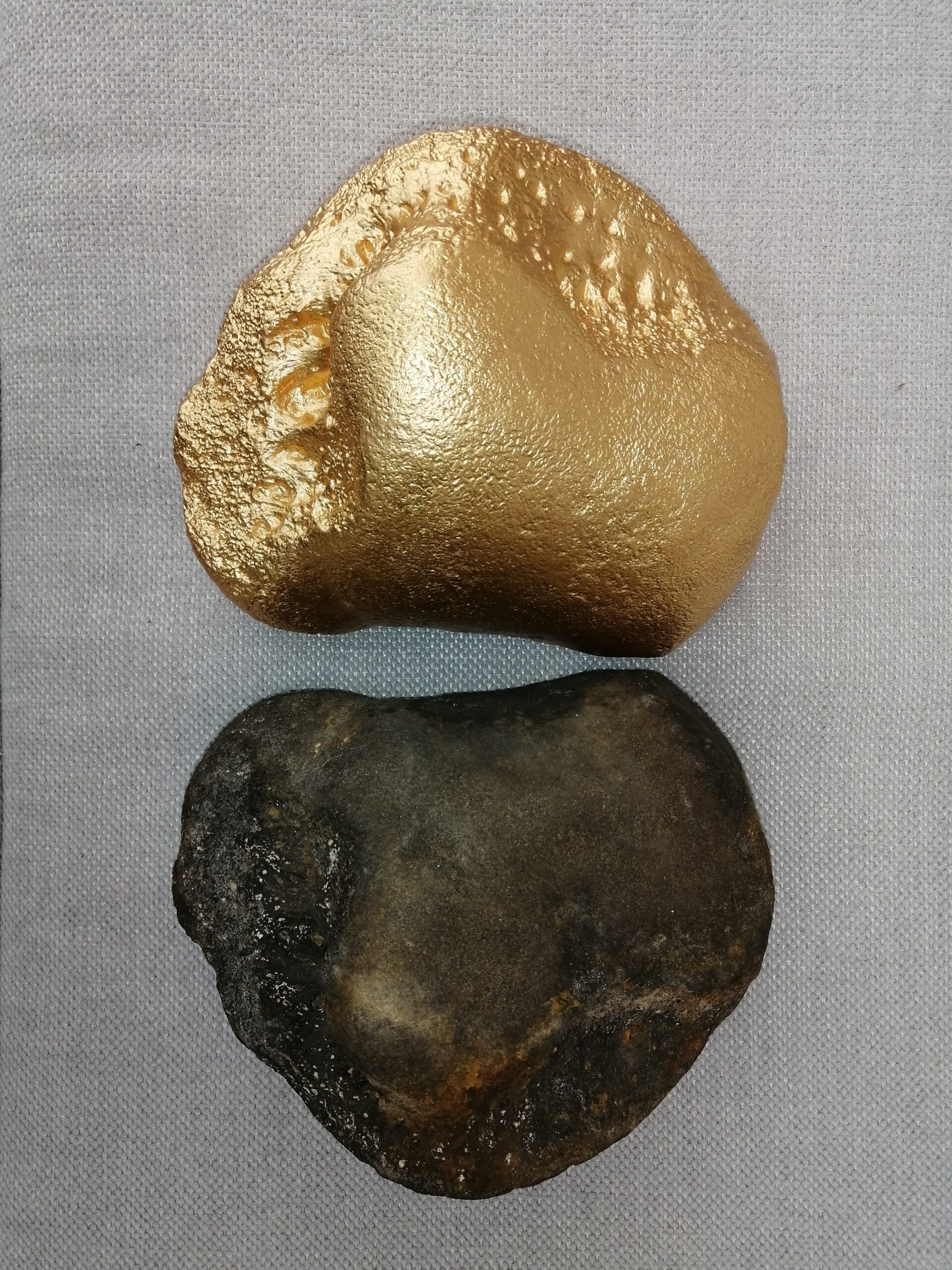
Andy Goldsworthy OBE
Andy Goldsworthy OBE is an English sculptor, photographer, and environmentalist who produces site-specific sculptures and land art situated in natural and urban settings. The materials used in Goldsworthy’s art often include brightly coloured flowers, icicles, leaves, mud, pinecones, snow, stone, twigs, and thorns. In contrast to other artists who work with the land, most of Goldsworthy’s works are small in scale and temporary in their installation. For these ephemeral works, Goldsworthy often uses only his bare hands, teeth, and found tools to prepare and arrange the materials.
His work has made him one of the most respected and admired land artists in the world, using his art to remind the audience of the beauty and fragility of nature.
For The Extinction Collection Andy has used ancient flints from Happisburgh – a handaxe and flake – to create a video work. He uses the flints out in the Scottish wilderness as tools to create colour and art from local ironstone.
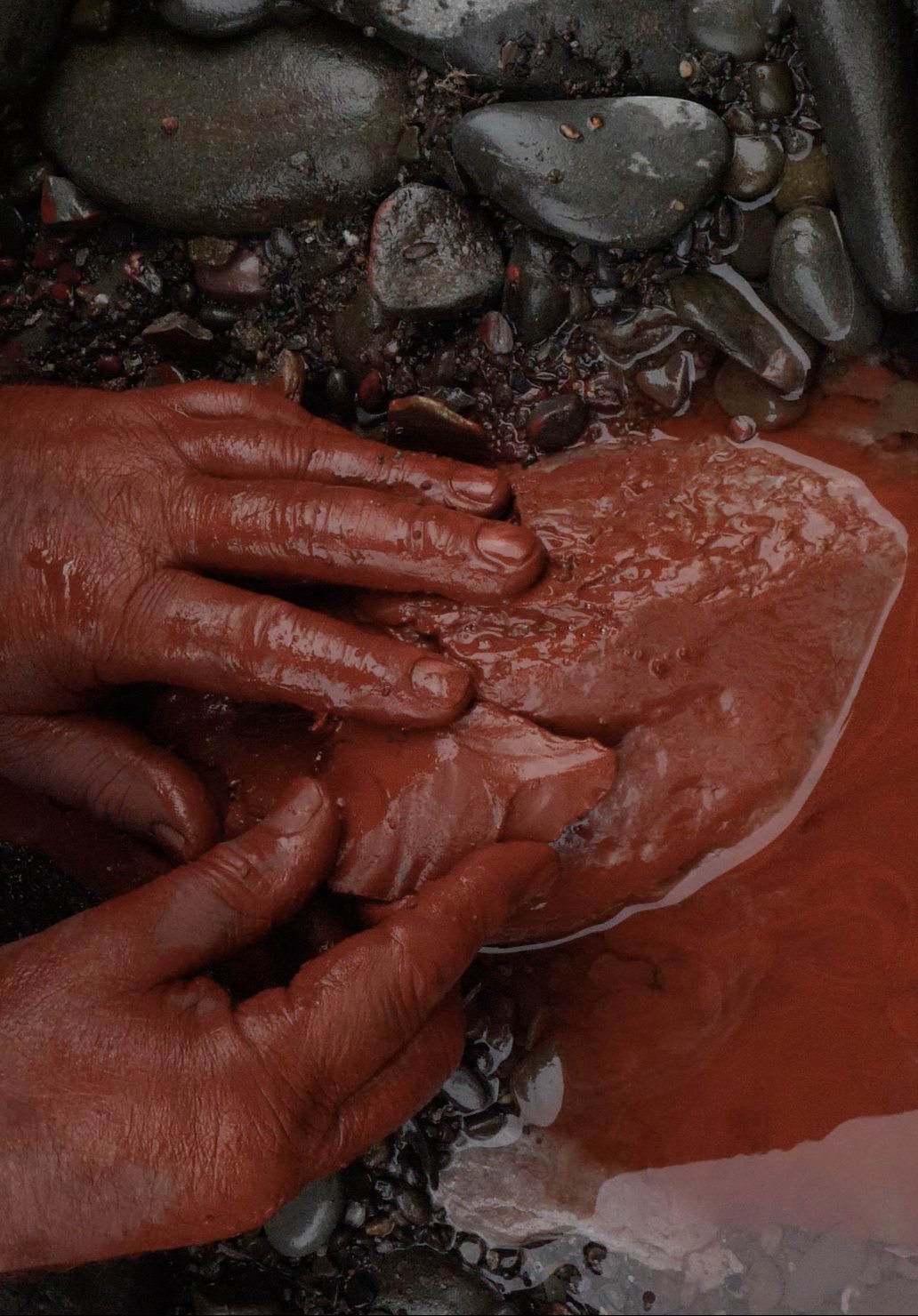
Michael Pinsky
Michael Pinsky is a British artist whose international projects challenge the status quo on climate change, urban design and societal wellbeing. He explores issues which shape and influence the use of our public realm to create ambitious and provocative installations in galleries and public spaces. Taking the combined roles of artist, urban planner, activist, researcher and resident, he starts residencies and commissions by working with local people and resources, allowing the physical, social and political environment to define his working methodology.
His work has been shown at: TATE Britain; Museum of Contemporary Art, Chengdu; Saatchi Gallery; Victoria and Albert Museum and at La Villette, Paris. His recent installation Pollution Pods is touring internationally and has been exhibited in London, COP 26, IUN Climate Change Summit, New York, Melbourne & COP28.
For The Extinction Collection Michael is creating a video work using fragments of mammoth teeth from Happisburgh beach in the Marshall Islands, South Pacific. The Marshall Islands will be one of the first nations to cease to exist because of ocean rise.
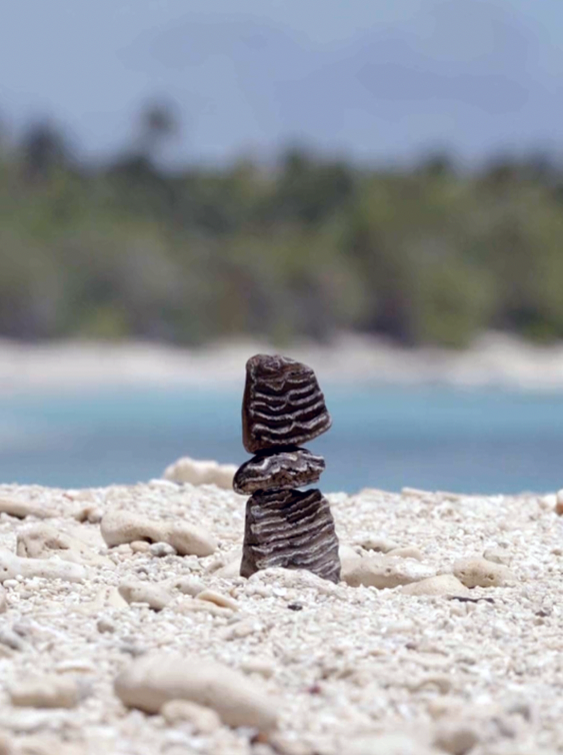
David Nash OBE RA
David Nash studied at Kingston College of Art from 1963 to 1967 and at Chelsea School of Art (Postgraduate) from 1969 to 1970. Nash’s first solo exhibitions were held in 1973 at Queen Elizabeth Hall, York and at Oriel, Bangor, Wales. These rapidly led to a series of solo exhibitions throughout the UK and his international reputation was established after his first solo shows overseas were held in 1980 at Elise Meyer Gallery, New York and at Galleria Cavallino, Venice, Italy. Since then, he has continued to hold solo shows on an annual basis throughout the world.
Nash’s work has also been included in numerous international key group exhibitions since 1970. These include The Condition of Sculpture, at the Hayward Gallery, London (1975), British Art Now: An American Perspective, at the Soloman R Guggenheim Museum, New York and tour (1980), British Sculpture in the Twentieth Century, Part II, at the Whitechapel Art Gallery, London (1981) and Aspects of British Art Today, at the Tokyo Metropolitan Art Museum in (1982).
David is creating a work for The Extinction Collection from 800,000 – 1 million year old wood preserved in the early sediments found on Happisburgh beach.
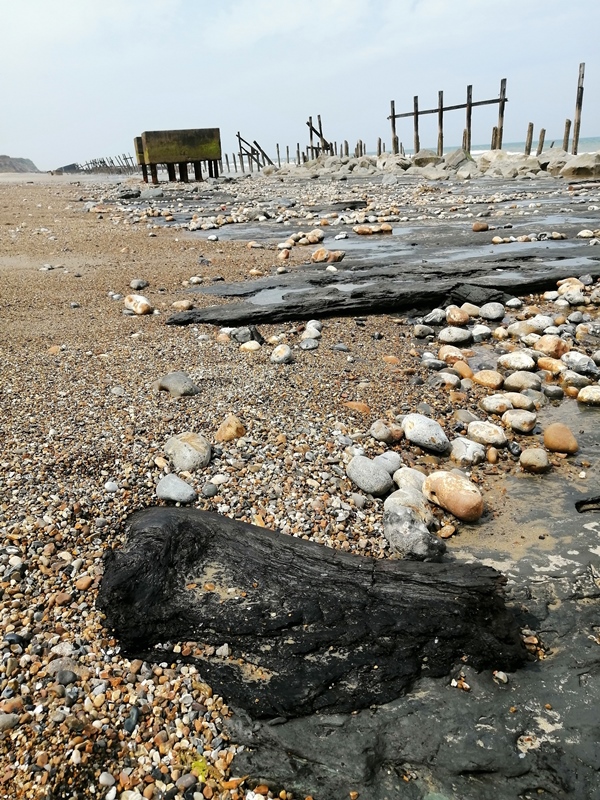
Eleanor Lakelin
Eleanor Lakelin is a sculptor in wood. She works only with trees grown in Britain, felled due to decay. A deep knowledge and a passionate interest in the natural properties of wood result in forms that seem true to the spirit of the material and which encourage us to look at the complexities of nature with a new perspective. Her work is rooted in the rhythm of growth, the eroding power of the elements and the passing of time. Material is transformed into objects that invite touch and reflection, reminding us of our elemental and emotional bond with wood and our relationship to the earth.
Eleanor’s work is exhibited internationally and is part of prestigious private and public collections, including the V&A – Victoria & Albert Museum, London; MAD – Museum of Arts & Design, New York; the Museum of London, The National Museum, Norway; LOEWE Foundation, Madrid and the Mint Museum of Craft and Design.
Eleanor is incorporating pieces of ancient wood from Happisburgh in her signature works.
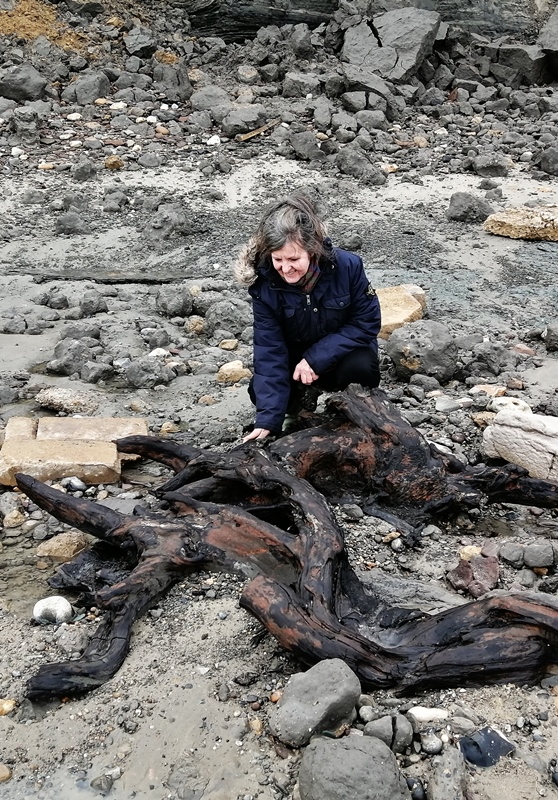
Julian Stair OBE
Julian Stair is one of the UK’s leading potters. He studied at Camberwell School of Art and the RCA. He has exhibited internationally since 1982 and has work in over 30 public collections including the V&A Museum, British Museum, American Museum of Art & Design, New York and The Fitzwilliam Museum, Cambridge. Recent solo exhibitions include Art, Death and the Afterlife, (Sainsbury Centre, Norwich 2023).
He is a leading historian of English studio ceramics. He completed a PhD at the RCA in 2002 researching the critical origins of English studio pottery and has written extensively. Julian’s essays have been published by Routledge, Bloomsbury, the Courtauld Institute, Tate Gallery and the Yale Center for British Art. He was awarded an OBE in 2022 for his services to ceramics.
Julian is making an Ossuary from the ancient clay sediments from Happisburgh beach, salvaged once washed from the cliffs. It will contain the bones of mammoths.
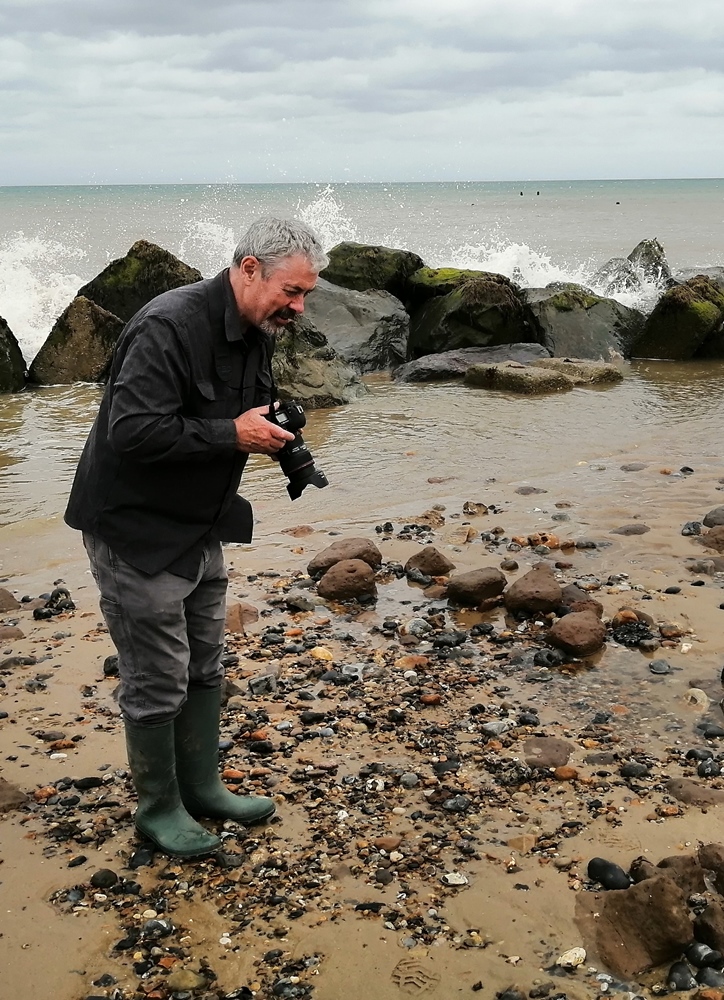
Jon Foreman
A creator of various styles of Land Art, John is ever in search of “different.” With 1 million followers on Social Media, his work is popular and powerful. Be it with stones or leaves, inland or on beaches. He has even created works in derelict environments using materials such as broken glass or ashes and general debris.
The scale of his work varies massively; he may use stones or driftwood to make something small and minimal. Otherwise he may be seen drawing massive scale sand drawings up to 100 metres across. His work is ephemeral in many differing ways; Most often the weather and immediate climate will make his work disappear (be blown down/washed away by the tide), and sometimes other people will interfere.
For The Extinction Collection, Jon came to Happisburgh to create one of his stunning works on the beach, using pieces of clay eroded from the cliffs. The art installation was photographed daily throughout the following week, as it was destroyed by the sea and covered by cliff falls.
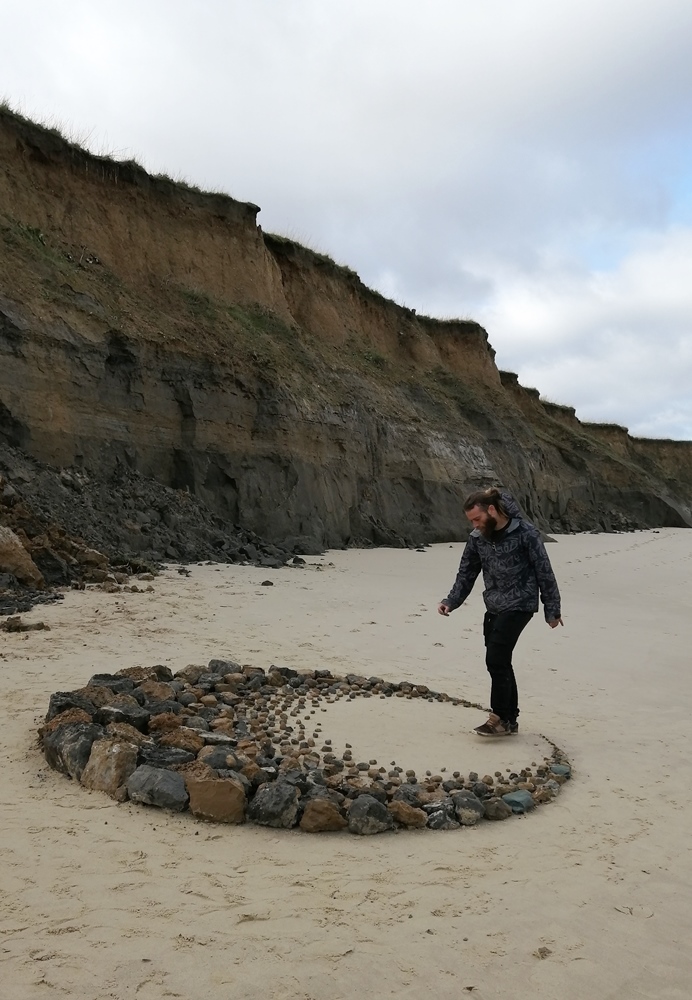
Conrad Shawcross
Imbued with an appearance of scientific rationality, Conrad Shawcross’s sculptures explore subjects that lie on the borders of geometry and philosophy, physics and metaphysics. Attracted by failed quests for knowledge in the past, he often appropriates redundant theories and methodologies to create ambitious structural and mechanical montages, using a wide variety of materials and media, and often working on an epic scale.
Different technologies and natural forces inspire his forms, but his mysterious machines and structures remain enigmatic, filled with paradox and wonder. Some have an absurdist melancholy feel, while others tend to the sublime.
For The Extinction Collection, Conrad visited Happisburgh to study the landscape and artefacts revealed by the coastal erosion. He will be creating a work that symbolises the laws of the universe, showing the passing of time between the lost human species found at Happisburgh.
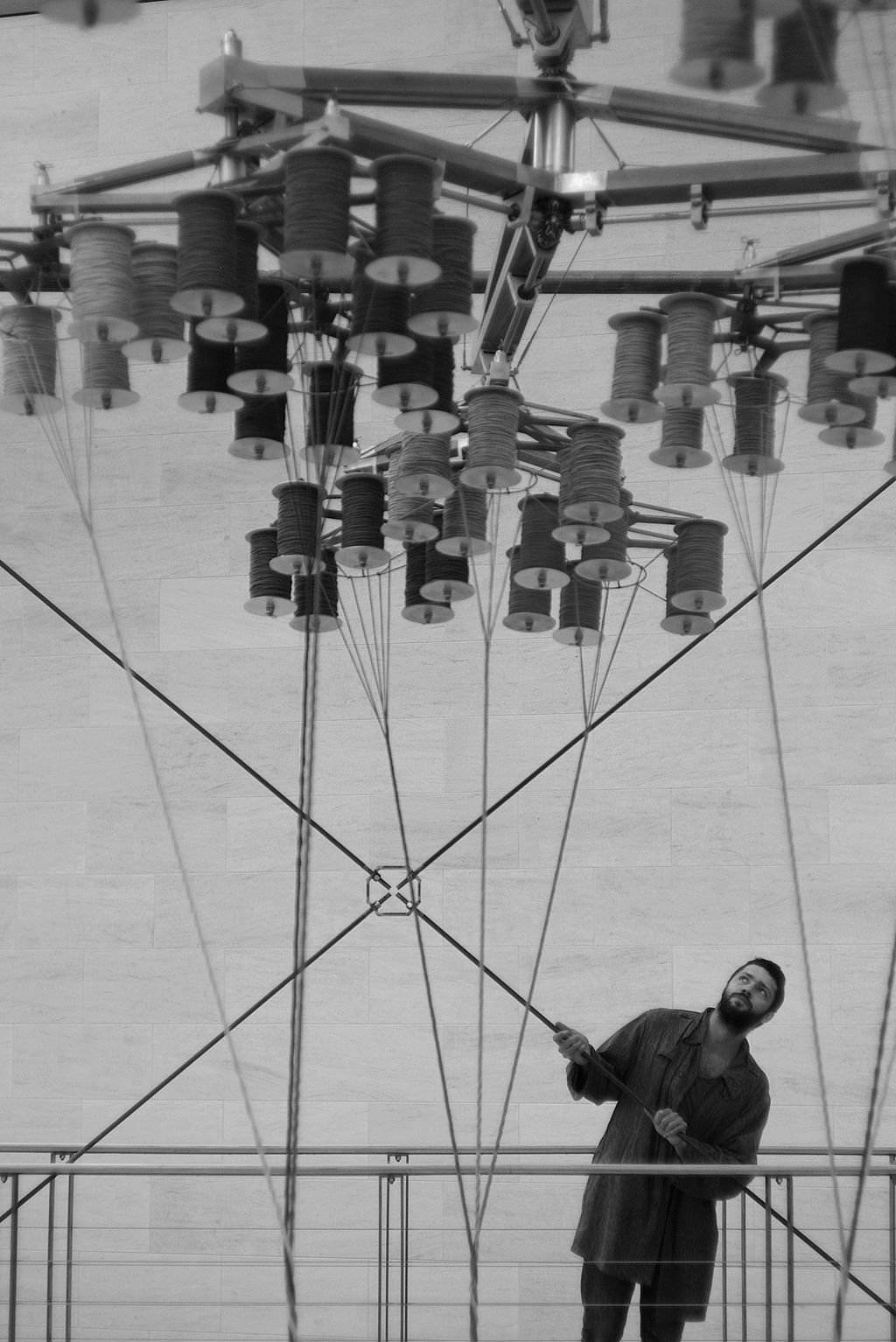
Participating Photographers
Sebastião Salgado
Sebastião Salgado is a Brazilian social documentary photographer and photojournalist.
He has traveled in over 120 countries for his photographic projects. Most of these have appeared in numerous press publications and books. Touring exhibitions of his work have been presented throughout the world.
He is a UNICEF Goodwill Ambassador. He was awarded the W. Eugene Smith Memorial Fund Grant in 1982, Foreign Honorary Membership of the American Academy of Arts and Sciences in 1992 and the Royal Photographic Society’s Centenary Medal and Honorary Fellowship (HonFRPS) in 1993. He has been a member of the Académie des Beaux-Arts at the Institut de France since April 2016.
Brooks Range, Alaska, USA – the Arctic National Wildlife Refuge (ANWR) in northeastern Alaska is the largest wildlife refuge in the United States, covering no fewer than six ecozones and stretching some 200 miles (300 kilometers) from north to south. Along its northern coast, barrier islands, coastal lagoons, salt marshes and river deltas of the Arctic coastal tundra provide a marvelous habitat for migratory water birds. Coastal land and sea ice are sought by caribou seeking relief from insects during the summer and by Arctic bears for hunting seals and breeding during winter. This photograph was taken in the eastern part of the Brooks Range, which rises to over 9,800 feet (3,000 meters); the rugged stretch of mountains is sliced by deep river valleys and numerous glaciers. The immense variety of microclimates results from the collision of cold air from the Arctic and hot air coming from the Yukon River region of central Alaska. Alaska. USA. June and July 2009.
Argentic photography, 50 x 60cm print

Michael Kenna
Michael Kenna is an English photographer best known for his unusual black and white landscapes featuring ethereal light achieved by photographing at dawn or at night with exposures of up to 10 hours. His photos concentrate on the interaction between ephemeral atmospheric condition of the natural landscape, and human-made structures and sculptural mass.
Many books have been published of his work, the subjects of which range from The Rouge, in Dearborn Michigan, to the snow-covered island of Hokkaido, Japan. Kenna’s work is also held in permanent collections at the Bibliothèque Nationale, Paris, The National Gallery of Art, Washington DC, Tokyo Metropolitan Museum of Photography, and the Victoria and Albert Museum in London.
Huangshan Mountains, Study 31 (Anhui, China)
Silver halide print
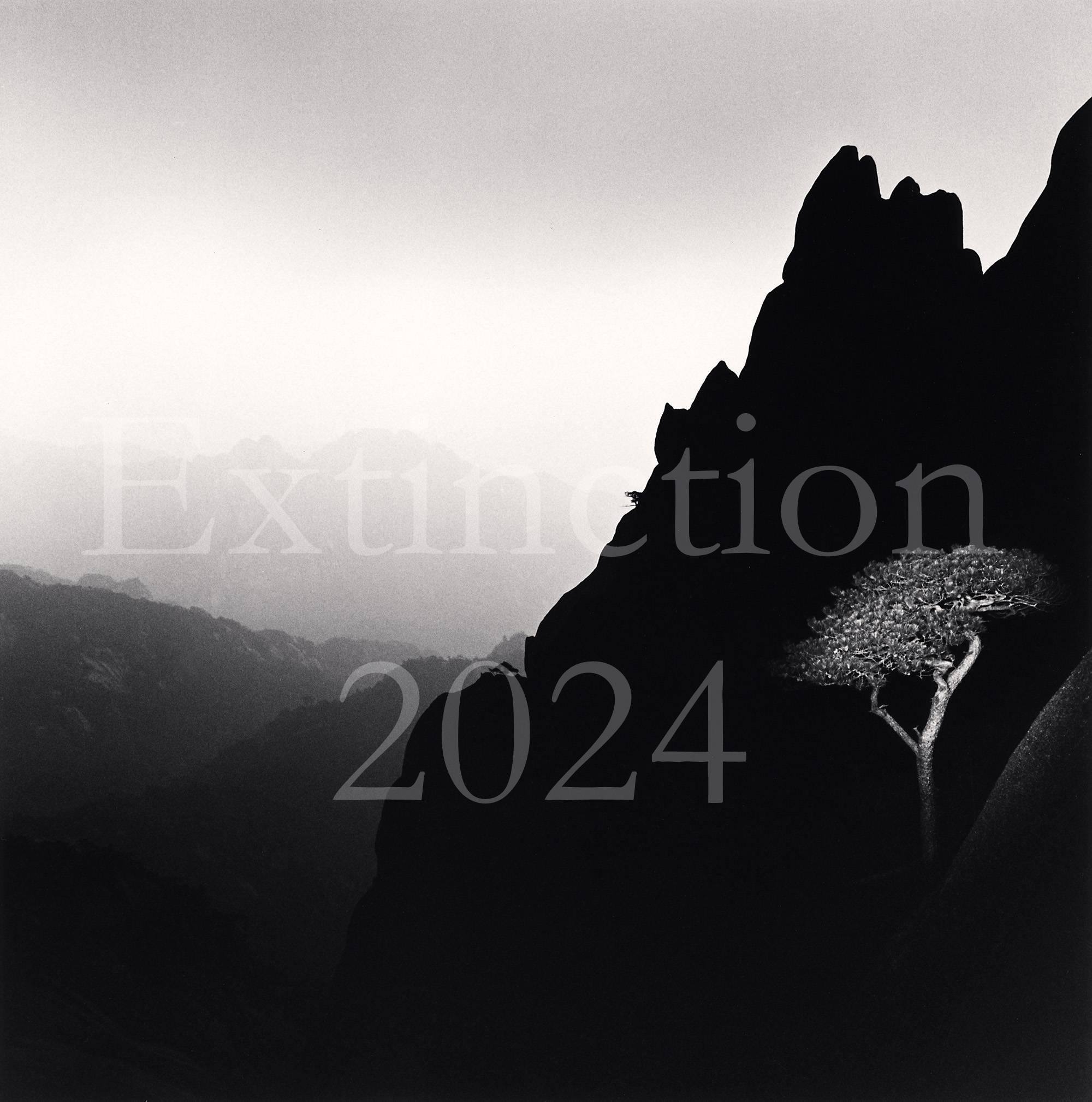
Richard Mosse
Richard Mosse (b. 1980, Ireland; based in New York) is an artist who seeks to heighten and extend the language of documentary photography to draw attention to overlooked yet urgent stories, working with the aesthetic power of his medium to create highly collaborative, immersive and groundbreaking new forms in photography and the moving image. He often employs special photographic technologies to encode invisible aspects of historically significant subjects within the materiality of his imagery.
Log Barges, Santarem, Brazil – archival pigment print, 63 1/2 x 28 inches (print), Edition 4 of 5
Large quantities of tropical hardwood moored on the side of the Amazon River. These are very often illegally logged and then fraudulently certified before being exported and sold on international markets. This map of log barges was made not long after President Bolsonaro’s Minister of the Environment, Ricardo Salles, resigned after federal police raided his offices in an investigation into the enabling of international exportation of protected hardwoods in the Santarem area. It cannot be verified whether this timber is related to Salles and the investigation. It is highly likely that the vast majority of these logs were culled illegally and are destined for international markets.
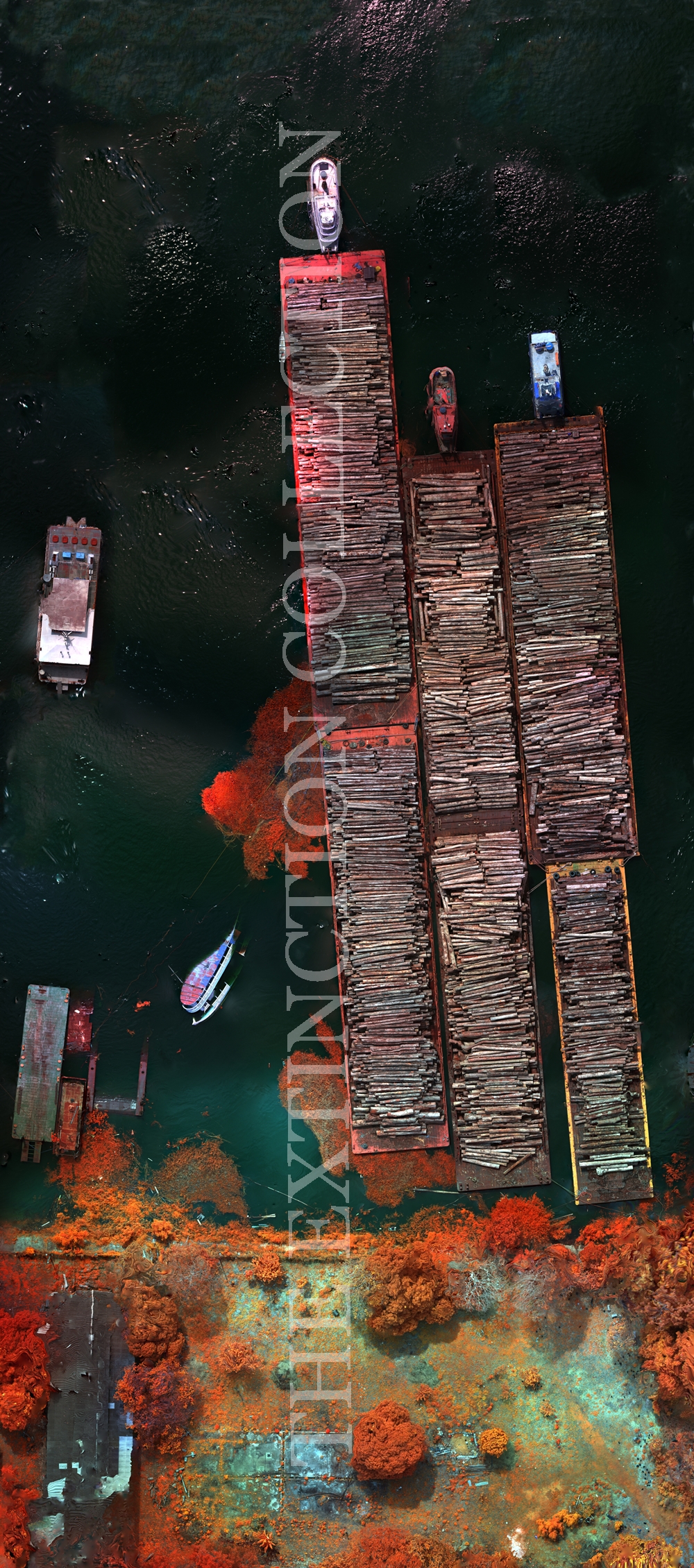
Beverly Joubert
Beverly is a National Geographic Explorer-in-Residence. She has specialized in African photography for nearly 35 years, with images in a dozen or more National Geographic Magazines, in more than 12 books, and thousands of articles around the world. Together with her husband Dereck Joubert, their mission is the conservation and understanding of the large predators and other key wildlife species that determine the course of all conservation in Africa.
Water Lord, ILFORD textured silk Fine Art archival paper, 270gsm, 70cm x 100cm.
“This elephant came over to our canoe while feeding gently on the swamp grasses of the Zambezi River.”
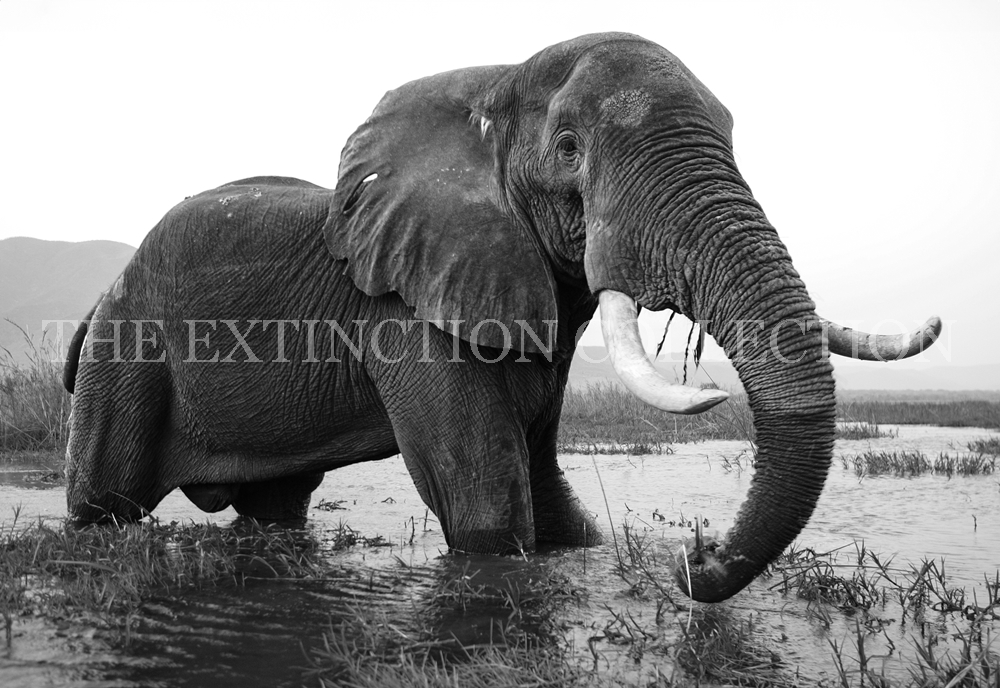
Daniel Beltra
Born in Madrid, Spain, Daniel Beltra is a photographer based in Seattle, Washington. His passion for conservation is evident in images of our environment that are evocatively poignant. The most striking large-scale photographs by Beltra are images shot from the air. This perspective gives the viewer a wider context to the beauty and destruction he witnesses, as well as revealing a delicate sense of scale. In 2011 he received the Wildlife Photographer of the Year Award and the Lucie Award for the International Photographer of the Year Beltra’s work has been published by the most prominent international publications including The New Yorker, Time, Newsweek, The New York Times, Le Monde, and El Pais, amongst many others. Daniel Beltra is a fellow of the prestigious International League of Conservation Photographers.
Iceland #5, Hvítá River, 2014; Chromogenic print
Reflecting the scale and magnitude of land, sky and sea from an aerial perspective – the river flows towards the open sea, heavy with sediment from melting glaciers. Changes in the Hvítá river’s flow and temperature have a significant impact on the landscape of South Iceland. People rely on the river for irrigating farmland, and higher temperatures have an indirect negative effect on fish stock, such as salmon.
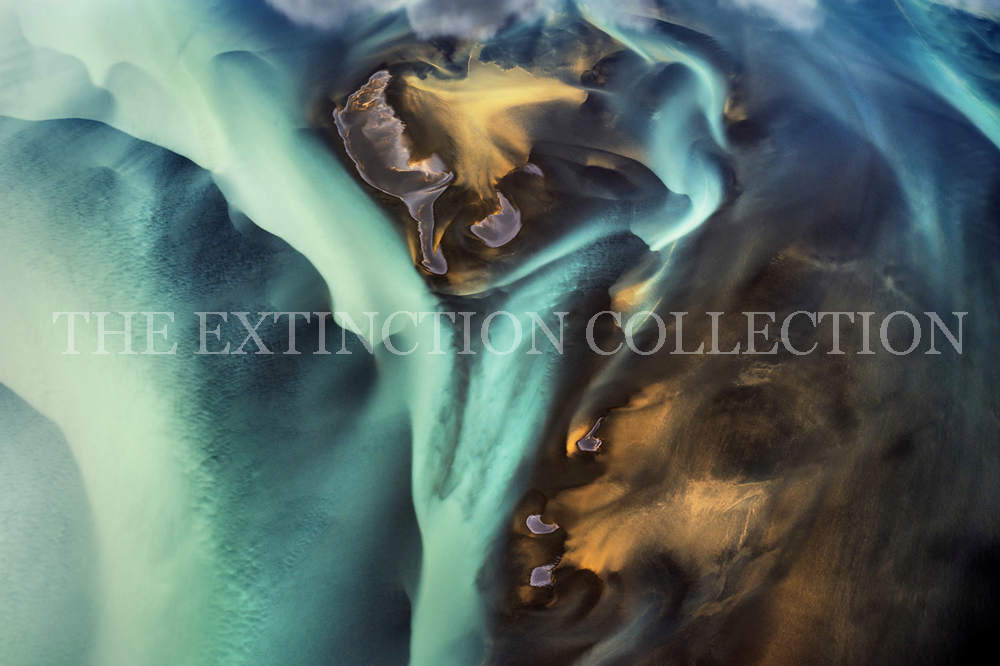
The Extinction Collection: Background
Explorers Against Explorers is based in the village of Happisburgh, Norfolk, UK. Happisburgh is the most (in)famous location in the UK for suffering coastal erosion due to sea-rise through climate change. Currently the cliffs are being eroded at a rate of over one metre per year. Its church and lighthouse are projected to have collapsed into the sea by 2100.
As the cliffs are eroded, sediments are exposed on the beach that date to the Pleistocene age, ranging in date from between 500,000 and 900,000 years ago.
In these sediments are the fossils and tools of now-extinct animals (including three species of mammoth, the woolly rhino, elephant, lion, bear and hyena) and early humans (Homo antecessor and Homo heidelbergensis), all made extinct locally by climate and sea level change.
In 2013 human footprints were discovered, preserved in the sediment, and dating to 850,000 years ago. This makes them the oldest-known human footprints outside Africa, and Happisburgh one of the most important archaeological sites in the world.
Artworks made from materials created by climate change and rediscovered hundreds of thousands of years later by the actions of present-day climate change, will be exhibited in 2024-25 to raise publicity for our campaigns and projects, as well as promoting awareness about current climate issues.
Where to see The Extinction Collection
Edinburgh:
The Fine Art Society,
6 Dundas Street
Edinburgh
EH3 6HZ
19th Sept – 20th October 2024
London:
gallery@OXO
OXO Tower Wharf
Barge House st
Lonson
SE1 9PH
29th Oct – 16th November 2024
Regional UK Tour:
Jan – May 2025

